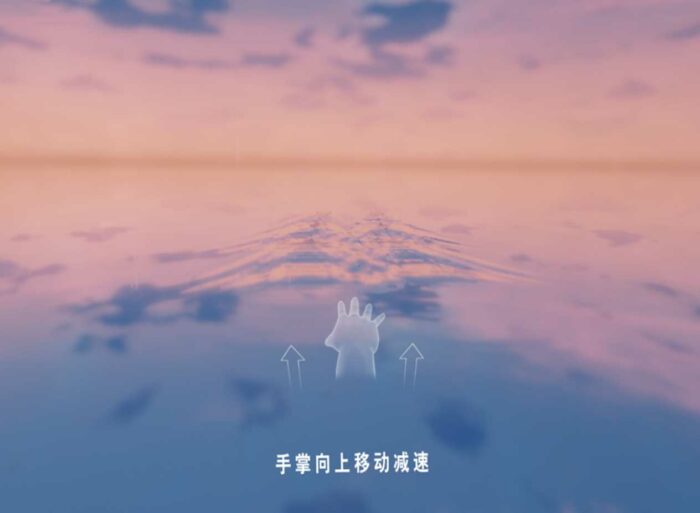Salt Flats
Real-time interaction captures the feeling of driving across salt flats.
- Shanghai, China
Demonstrating the driving style of a car at industry events can be challenging. Working with a leading automotive company, we created an interactive experience that used real-time technology to recreate the feeling of a car gliding over salt flats. A stunning visual experience enhanced by intuitive interaction through a Leap Motion sensor, the experiential marketing activation showcased the power of real-time technology to enhance brand communications in the commercial world.
Capturing a feeling
The BriefLaunching new vehicles at industry events often requires creative solutions for helping visitors to experience cars that may not be physically present. Responding to this challenge, we worked with a leading automotive company to create a real-time interactive experience promoting the sleek form and smooth driving style of their new vehicles.
To capture the feeling of these cars, we invited visitors to experience an abstract recreation of driving over a breathtaking landscape of salt flats. Completely responsive to user input, the experiential marketing installation used hand motion tracking as the basis for an intuitive, real-time visualisation of the vehicle’s smooth handling.

Nostalgic gestures
InteractionInteraction throughout this experiential marketing installation was facilitated by a Leap Motion sensor capturing the movement of visitors’ hands. By extending their hand out over the sensor like a kite, users were able to control the speed and direction of the invisible car as it moved across the virtual salt flats. Even the slightest movement was captured and visualised in real time, causing the car to arc and cut through the water beneath.
Subtle feedback
LEDs
To enhance these subtle, responsive interactions, we mounted LED lights on the physical platform underneath the Leap Motion sensor. As users travelled through glistening sunsets and seductive auroras, these lights projected gentle light feedback onto their hand, emphasising points of interaction and building on the meditative atmosphere of the experiential marketing activation.
Real-time landscape
EnvironmentBuilt on Unreal Engine, our goal for this experience was to recreate a stunning landscape of salt flats in breathtaking yet believable detail. Maintaining a framerate of over 90fps, our virtual environment featured realistic water ripples across reflected sunsets and auroras, along with an impression of wind that added a level of subtle drama to the experience.

To create a realistic representation of water, we took advantage of the redner target system in UE4 which allows easy rendering of textures in real-time. Using this system, we were able to generate wave ripples across a metallic surface, giving the impression of a thin membrane of water atop pristine salt flats. We then printed tyre tracks into the water, propagating them out in a subtle wake as visitors moved through the landscape.
Much of the experience’s visual awe came from the simple yet stunning reflections of the sky onto the water. In order to achieve these visuals, we used a planar reflection system to capture reflections of the sky and project them onto the water. While this technique produced high-quality visuals, it was costly in terms of performance. As such, we had to carefully limit the environment in order to maintain 90fps alongside a convincing water illusion.

Emphasising atmosphere
Text + TransitionsGiven the simplicity of the experiential marketing activation, it was important that we maintain a feeling of beauty and movement across every aspect of the visualisation. Adopting an unobtrusive user interface design, we created floating text and gentle instructional prompts to enhance the calm atmosphere of the experience while also communicating key marketing messages for our client.
Additionally, we wanted transitions to emphasise the feeling of gliding through the virtual landscape. Using a UE4 code plugin we were able to turn text into GPU particles upon impact before programming these particles to form a tornado-like vertex field. We then used another community tool to take control of these fields in 3ds Max, creating the impression of wind as visitors moved their car through the experience.

Stay in the loop
Subscribe to our newsletter to receive updates and insights about Salt Flats and other S1T2 projects.


















